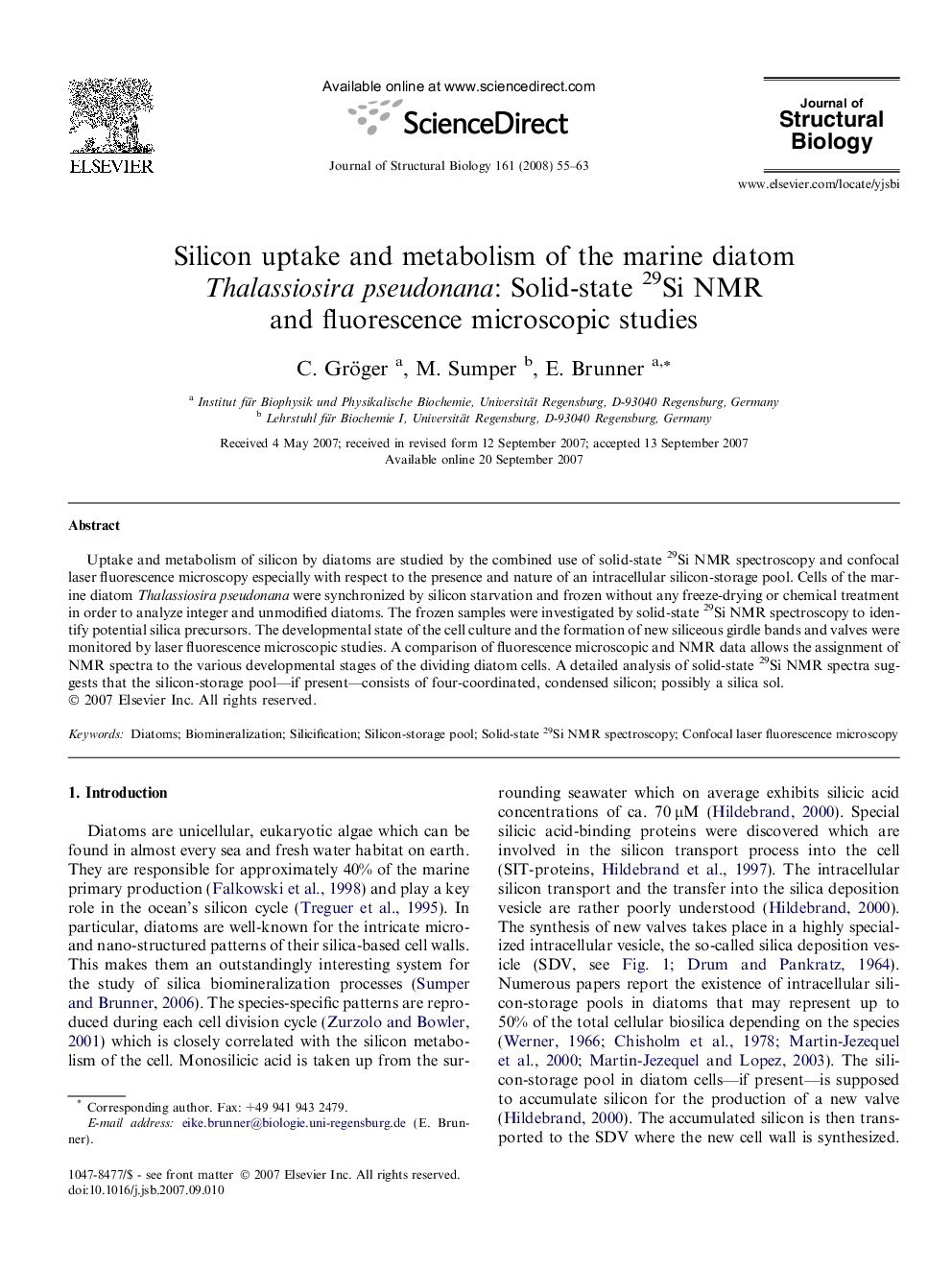| Article ID | Journal | Published Year | Pages | File Type |
|---|---|---|---|---|
| 2829272 | Journal of Structural Biology | 2008 | 9 Pages |
Uptake and metabolism of silicon by diatoms are studied by the combined use of solid-state 29Si NMR spectroscopy and confocal laser fluorescence microscopy especially with respect to the presence and nature of an intracellular silicon-storage pool. Cells of the marine diatom Thalassiosira pseudonana were synchronized by silicon starvation and frozen without any freeze-drying or chemical treatment in order to analyze integer and unmodified diatoms. The frozen samples were investigated by solid-state 29Si NMR spectroscopy to identify potential silica precursors. The developmental state of the cell culture and the formation of new siliceous girdle bands and valves were monitored by laser fluorescence microscopic studies. A comparison of fluorescence microscopic and NMR data allows the assignment of NMR spectra to the various developmental stages of the dividing diatom cells. A detailed analysis of solid-state 29Si NMR spectra suggests that the silicon-storage pool—if present—consists of four-coordinated, condensed silicon; possibly a silica sol.
